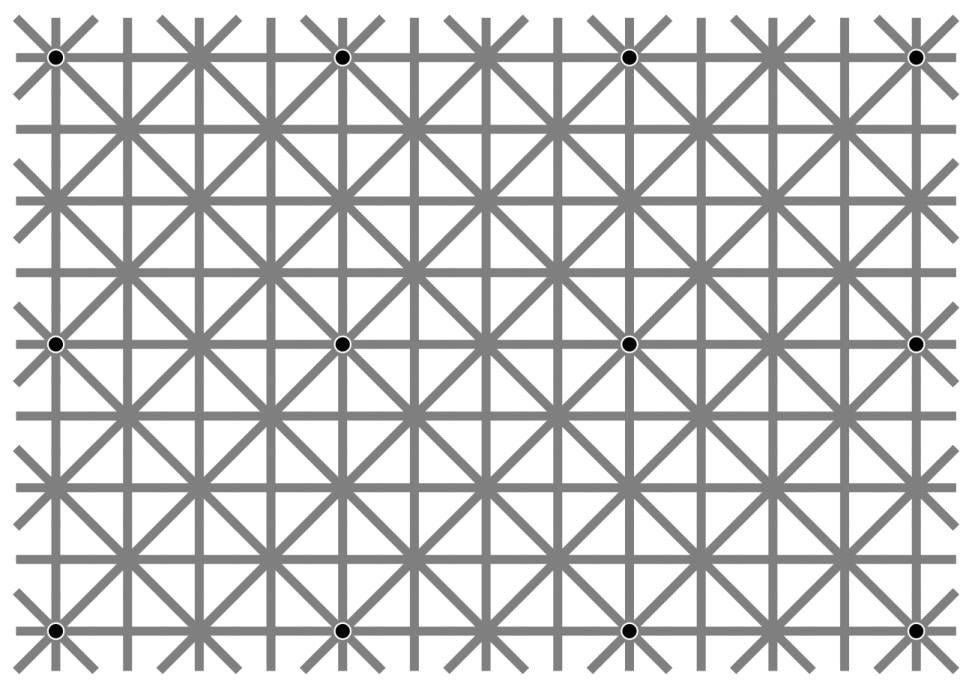How the optical illusion showing black dots on a grey background actually works
It's all because our eyes are a bit rubbish

Optical illusions might be one of the internet’s favourite things. And it just got a brand new one: a strange picture of overlapping grids that provides the ultimate combination of frustration and joy.
The new illusion looks simple, showing intersecting grey lines on a white background. But looking closely starts it moving – and though there are actually 12 black dots in it, it’s only possible to see a few of them at each time.
Nobody knew why. And everyone wanted to know – people have shared the image tens of thousands of times since it was posted over the weekend, encouraging people to help find out the mystery and enjoy it.
Like all optical illusions, part of the thrill is that things aren’t what they seem. We know that there’s 12 dots, but it doesn’t look that way – and the disjunct between those two things is a fun reminder that we can be fooled about the world.
The picture was re-posted over the weekend, but actually began all the way back in a journal called Perception, which often discusses optical illusions and what they tell us about human understanding.
That piece, ‘Variations on the Hermann Grid: An Extinction Illusion’, showed the image and described the bizarre effect.
“When the white disks in a scintillating grid are reduced in size, and outlined in black, they tend to disappear,” the paper’s abstract read. “One sees only a few of them at a time, in clusters which move erratically on the page. Where they are not seen, the grey alleys seem to be continuous, generating grey crossings that are not actually present. Some black sparkling can be seen at those crossings where no disk is seen. The illusion also works in reverse contrast.”
The effect happens because of the failings in humans’ peripheral vision. We’re good at seeing things straight on – but try and look at the things in the side of your sight and they’ll become blurry shapes at best.
Some parts of those blurs aren’t even being seen by your eyes at all. Instead, there are gaps – and the brain fills them in using the information around it. That can mean that you can see shapes that don’t exist at all – or miss things that are real, even if you expect to be able to see them.
That appears to be what is happening in the newly-viral image. It’s not the first time that effect has been exploited in an optical illusion – and, knowing the internet, it will be far from the last.
Join our commenting forum
Join thought-provoking conversations, follow other Independent readers and see their replies
Comments